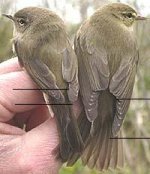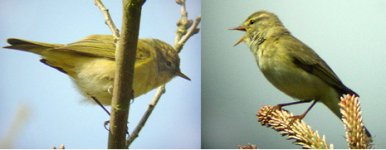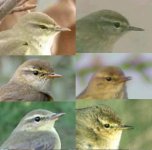jonafly
Well-known member
Hi there,
i'm sure this question has been asked before, butI'm gonna pose it anyway.
As you might know by now I love birds, but it's all still a bit superficial. Can anyone explain to me in simple words (preferably with images) how to determine fitis and chiffchaff. I read some explanations on the net with poor images etc. and couldn't grasp it fully.
Or maybe a location on the net where I can find such an explanation.
I thank you for bearing with me.
André Jas
i'm sure this question has been asked before, butI'm gonna pose it anyway.
As you might know by now I love birds, but it's all still a bit superficial. Can anyone explain to me in simple words (preferably with images) how to determine fitis and chiffchaff. I read some explanations on the net with poor images etc. and couldn't grasp it fully.
Or maybe a location on the net where I can find such an explanation.
I thank you for bearing with me.
André Jas








